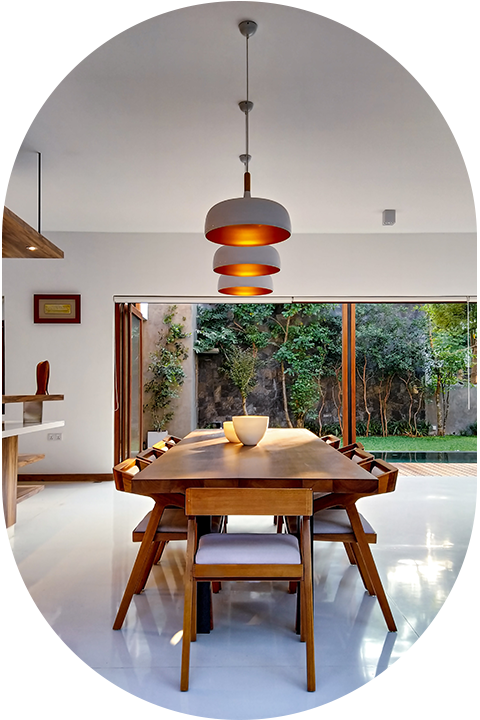Q 1. What is interior design?
Ans. Interior design is the art and science of enhancing the interior of a space to achieve a healthier and more aesthetically pleasing environment for the people using the space. Interior designers use design elements such as color, texture, pattern, and furniture to create a cohesive and functional space.
Q 2. What does an interior designer do?
Ans. An interior designer is responsible for creating functional and aesthetically pleasing interior spaces. They work with clients to understand their needs, preferences, and budget, and use their expertise to design and decorate spaces accordingly. Interior designers also source materials, oversee construction, and manage projects from start to finish.
Q 3. How do I choose an interior designer?
Ans. When choosing an interior designer, it's important to do your research and look for a designer with experience and a portfolio of work that aligns with your style and preferences. You can also ask for referrals from friends or family, read online reviews, and schedule consultations with potential designers to get a sense of their approach and communication style.
Q 4. How much does interior design cost?
Ans. The cost of interior design varies depending on the scope of the project, the experience of the designer, and the location of the project. Some designers charge a flat fee or hourly rate, while others charge a percentage of the total project cost. It's important to discuss fees and expectations with your designer before starting a project to ensure you are both on the same page.
Q 5. What are some popular interior design styles?
Ans. There are many different interior design styles, including traditional, modern, farmhouse, industrial, coastal, and bohemian, to name a few. It's important to choose a style that reflects your personal taste and fits the function of the space.
Q 6. How do I choose colors for my space?
Ans. When choosing colors for a space, consider the mood you want to create and the existing colors in the room. Use color theory to choose complementary or contrasting colors, and consider using an accent color to add interest and depth to the space.
Q 7. How can I decorate a small space?
Ans. Decorating a small space can be challenging, but there are several tricks to make the most of the space. Use light colors, mirrors, and furniture that doubles as storage to make the space feel larger. Choose furniture that is appropriately scaled for the space, and avoid clutter to maintain a clean and open feel.
Q 8. How can I add texture and pattern to a space?
Ans. Adding texture and pattern to a space can add visual interest and depth. Consider using textiles such as rugs, pillows, and curtains to add texture and pattern to a space. Wallpaper, tile, and artwork are also great ways to add pattern and interest.
Q 9. What should I consider when selecting furniture?
Ans. When selecting furniture, consider the function of the space and the needs of the people using it. Choose furniture that is appropriately sized for the space and that fits your style and budget. Quality and durability are also important considerations when investing in furniture.
Q 10. What are some common interior design mistakes to avoid?
Ans. Common interior design mistakes include choosing furniture that is too large or small for the space, neglecting lighting, using too many small accessories, and failing to consider the function of the space. It's important to consider the overall design of the space and to avoid clutter and excess to create a cohesive and functional environment.
 The Luxary
The Luxary
 House Design of the Era
House Design of the Era

